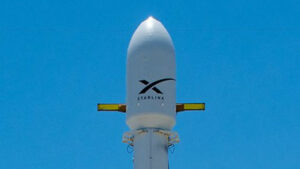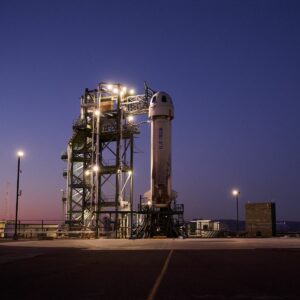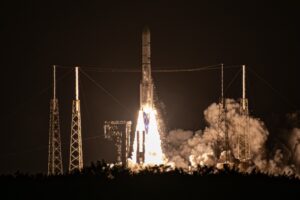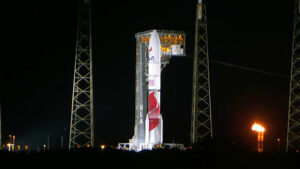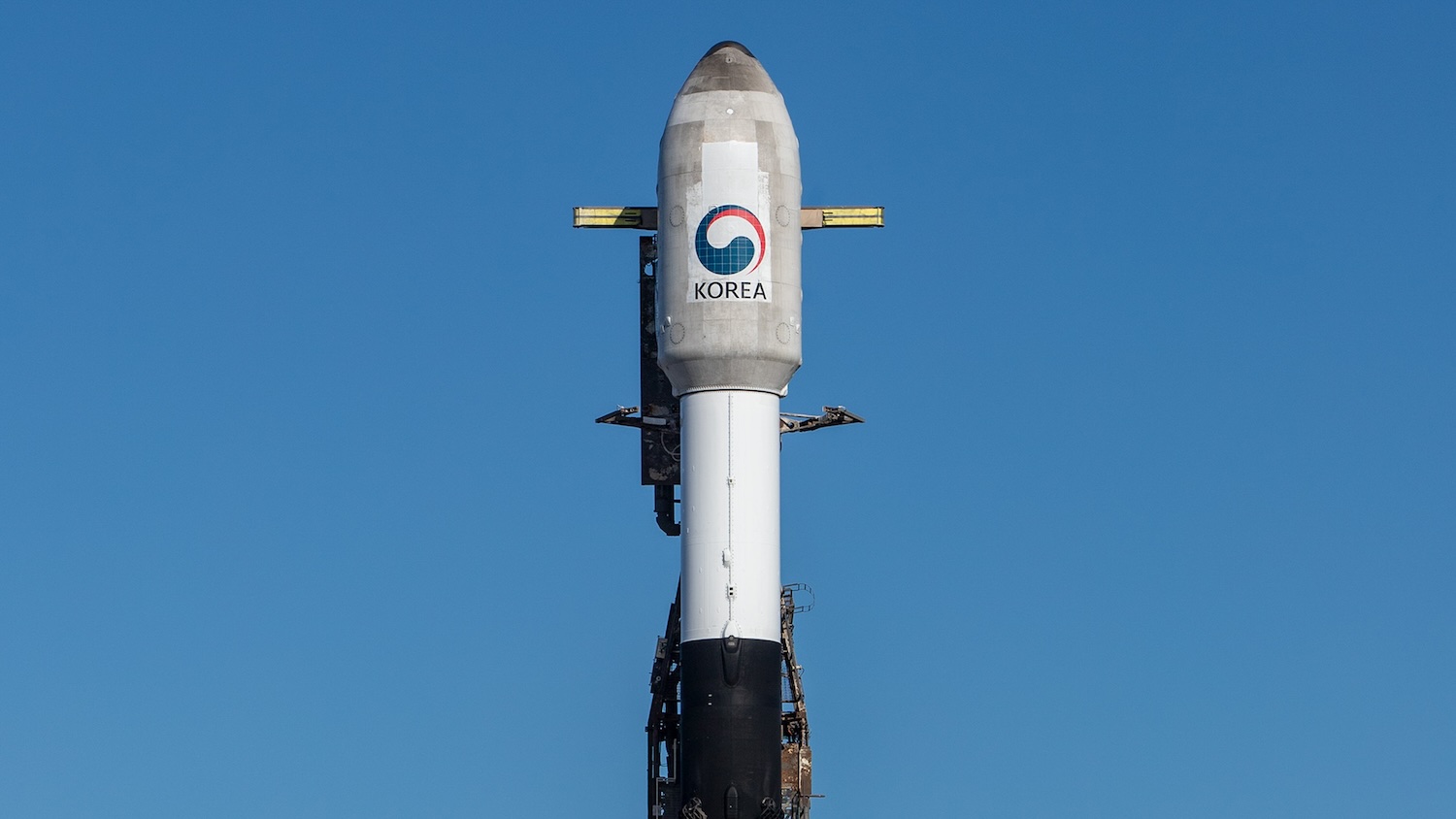
Kicking off the month of December for SpaceX was a Falcon 9 ride share mission with a payload of 25 spacecraft on board. The launch from Vandenberg Space Force Base was headlined by the Korea 425 mission.
The rocket lifted off from Space Launch Complex 4 East (SLC-4E) at 10:19 a.m. PST (1:19 EST, 1819 UTC). The launch is set to be the first of two missions SpaceX plans to launch over the weekend. The company aims to launch another batch of 23 Starlink satellites from Cape Canaveral Space Force Station in the early hours of Saturday morning.
[embedded content]
The booster for the mission, B1061, made its 17th flight after previously launching the Crew-1 and Crew-2 missions along with the fourth and fifth Transporter rideshare missions. This launch also marked the first time a Falcon 9 first stage with more than 15 previous flight will support a non-Starlink mission.
Following launch, the booster landed back at Landing Zone 4 (LZ-4) at VSFB about eight-and-a-half minutes after liftoff.
Headlining the slate of 25 spacecraft on board the Friday morning launch was a satellite for South Korea’s Agency for Defense Development (ADD) and its 425 Project. It features a 30cm resolution electro-optic (EO) and infrared (IR) sensors.
A spokesperson for the agency told the press earlier this month that this would be the country’s first military spy satellite with four additional satellites launching by 2025.
Those additional four SAR (synthetic aperture radar) satellites are being developed by Thales Alenia Space in partnership with Aerospace Industries, LTD. and Hanwha Systems Corporation.
“Thales Alenia Space is honored to have earned the confidence of the Korean Ministry of Defense and other authorities involved in this project, who recognized our proven track record in delivering state-of-the-art observation satellites,” said Donato Amoroso, Senior Vice-President, Observation, Exploration and Navigation at Thales Alenia Space, in a 2018 statement.
The contact for the satellites is worth $930 million, per DefenseNews.

According to a 2022 report in The JoongAng, the satellite launching on Friday along with the four SAR satellites will launch to an orbit between 600 and 700 km above the Earth’s surface and are designed to monitor North Korea every two hours.
The mission launch comes on the heels of North Korea’s claims that it successfully launched its own spy satellite on Nov. 21, an action that was condemned by several nations, including the United States. The U.S. National Security Council spokesperson Adrienne Watson said the launch using ballistic missile technology was “a brazen violation of multiple UN Security Council resolutions,” adding that it “risks destabilizing the security situation in the region and beyond.”
Along for the ride
In addition to the EO/IR satellite for South Korea, SpaceX said there are 25 additional spacecraft hitching a ride on the Falcon 9 rocket.
While it doesn’t give an exhaustive list, it does name the following payloads:
- Space BD’s ISL48
- SITAEL’s uHETSat
- D-Orbit’s ION SCV Daring Diego
- York Space Systems’ Bane
- PlanetiQ’s GNOMES-4
SITAEL S.p.A.’s uHETSat is a MicroSat mission supported by the European Space Agency (ESA). It features an electric propulsion system known as a Hall Effect Thruster and is powered by xenon propellant.
ESA said in statement, the satellite will start at a 550 km altitude orbit and “the goal is to achieve at least 1,000 ignition cycles and a single ignition to surpass 600 seconds.”
An innovative compact electric propulsion system from @SITAELspa been cleared to fly on the @ESA-supported µHETSat technology demonstration microsatellite mission, due to launch by year’s end https://t.co/rNVFq4nj2G pic.twitter.com/oT8NTTs5qj
— ESA Technology (@ESA_Tech) June 27, 2023
According to a Nov. 9, 2023, Federal Communications Commission (FCC) filing, the Satellite Programs and Policy Division gave PlanetiQ permission to deploy its GNOMES-4 satellite beret 505 and 545 km at an inclination between 97 and 98 degrees.
It’s allowed “to operate GNOMES-4 at altitudes from approximately 525 kilometers down to approximately 430 km, and with an inclination of 97.6 degrees (+/- 0.5 degrees) in sun-synchronous orbit, allowing for natural orbital decay.”
An ESA writeup of previous GNOMES constellation satellites describes them as “first commercial constellation of GNSS-RO (Global Navigation Satellite System-Radio Occultation) weather satellites.” It notes that there are 20 such satellites planned for the constellation.
GNOMES stands for GNSS Navigation and Occultation Measurement Satellites. The first of these launched back in August 2020 and they’re manufactured by Blue Canyon Technologies in Boulder, Colorado.

Other payloads flying on the mission include KOYOH, a MicroSat from Kanazawa University in Japan; Ireland’s first satellite, a 2U CubeSat called EIRSAT-1 (Educational Irish Research Satellite) built by students and faculty at University College Dublin; and a CubeSat for the company Privateer Space called “Pono,” which was described before the launch as “an edge compute, storage, machine learning, and data transmission module available to satellite operators as a hosted payload.”
Pono was one of the spacecraft hosted on the D-Orbit’s ION Satellite Carrier Vehicle dubbed “Daring Diego,” the 13th mission for D-Orbit.

- SEO Powered Content & PR Distribution. Get Amplified Today.
- PlatoData.Network Vertical Generative Ai. Empower Yourself. Access Here.
- PlatoAiStream. Web3 Intelligence. Knowledge Amplified. Access Here.
- PlatoESG. Carbon, CleanTech, Energy, Environment, Solar, Waste Management. Access Here.
- PlatoHealth. Biotech and Clinical Trials Intelligence. Access Here.
- Source: https://spaceflightnow.com/2023/12/01/live-coverage-spacex-to-launch-ride-share-mission-with-south-korean-reconnaissance-satellite-first-irish-satellite/
- :is
- ][p
- 000
- 1
- 10
- 15%
- 17th
- 19
- 20
- 2018
- 2020
- 2022
- 2023
- 2025
- 23
- 25
- 27
- 425
- 678
- 700
- 9
- 97
- 98
- a
- About
- above
- Achieve
- Action
- add
- adding
- addition
- Additional
- Adrienne
- Aerospace
- After
- agency
- aims
- allowed
- Allowing
- along
- also
- an
- and
- Another
- approximately
- ARE
- AS
- At
- AUGUST
- Authorities
- available
- back
- base
- BE
- been
- before
- being
- between
- Beyond
- Blue
- board
- booster
- built
- by
- called
- cape
- claims
- CO
- College
- Colorado
- comes
- commercial
- commission
- Communications
- compact
- company
- complex
- Compute
- Condemned
- confidence
- contact
- content
- CORPORATION
- Council
- country’s
- cycles
- data
- December
- Defense
- delivering
- deploy
- Derived
- described
- designed
- destabilizing
- developed
- Development
- Diego
- Division
- does
- Doesn’t
- down
- dubbed
- dublin
- due
- Earlier
- Early
- earned
- East
- Edge
- educational
- effect
- Electric
- embedded
- end
- ESA
- European
- European Space Agency
- Event
- Every
- exploration
- falcon
- Falcon 9
- FCC
- Features
- Federal
- Federal Communications Commission
- fifth
- Filing
- First
- first time
- flight
- flying
- following
- For
- Force
- four
- Fourth
- Friday
- from
- gave
- Give
- Global
- goal
- graphic
- Hall
- Hanwha
- Have
- heavy
- High
- honored
- hosted
- HOURS
- HTML
- http
- HTTPS
- ie
- Ignition
- image
- in
- include
- Including
- industries
- innovative
- involved
- Irish
- IT
- ITS
- Japan
- jpg
- known
- korea
- Korea’s
- Korean
- landing
- launch
- launched
- launches
- launching
- learning
- least
- Lifted
- List
- live
- Ltd
- machine
- machine learning
- made
- manufactured
- marked
- max-width
- measurement
- Military
- million
- ministry
- minutes
- Mission
- missions
- module
- Monitor
- Month
- more
- morning
- multiple
- name
- National
- national security
- Nations
- Natural
- Navigation
- North
- North Korea
- Notes
- nov
- Nov. 21
- observation
- of
- off
- on
- ONE
- operate
- operators
- Orbit
- Other
- our
- over
- own
- pad
- Partnership
- Patch
- per
- permission
- planned
- plans
- plato
- Plato Data Intelligence
- PlatoData
- policy
- powered
- previous
- previously
- Products
- Programs
- project
- propulsion
- proven
- radar
- ready
- recognized
- record
- region
- rendering
- research
- Resolution
- resulting
- Ride
- rocket
- s
- Said
- satellite
- satellites
- saturday
- seconds
- security
- senior
- sensors
- set
- several
- Share
- single
- situation
- Slate
- South
- South Korea
- south korean
- Space
- Space Force
- spacecraft
- SpaceX
- spokesperson
- Stage
- stands
- starlink
- starship
- start
- state-of-the-art
- Statement
- States
- station
- storage
- Students
- Successfully
- such
- support
- Supported
- Surface
- surpass
- synthetic
- system
- Systems
- technique
- Technologies
- Technology
- than
- that
- The
- Them
- There.
- These
- this
- time
- to
- track
- true
- two
- typical
- u.s.
- UN
- United
- United States
- university
- using
- UTC
- vehicle
- VIOLATION
- was
- Watson
- Weather
- weekend
- which
- WHO
- will
- with
- worth
- would
- year
- youtube
- zephyrnet

